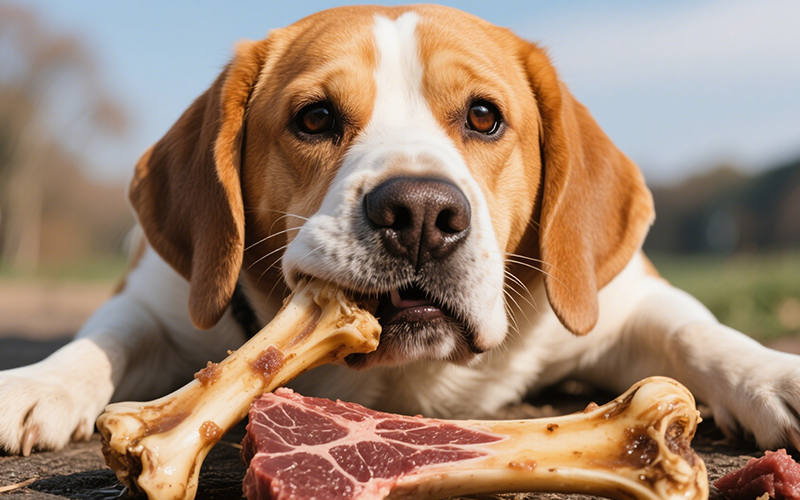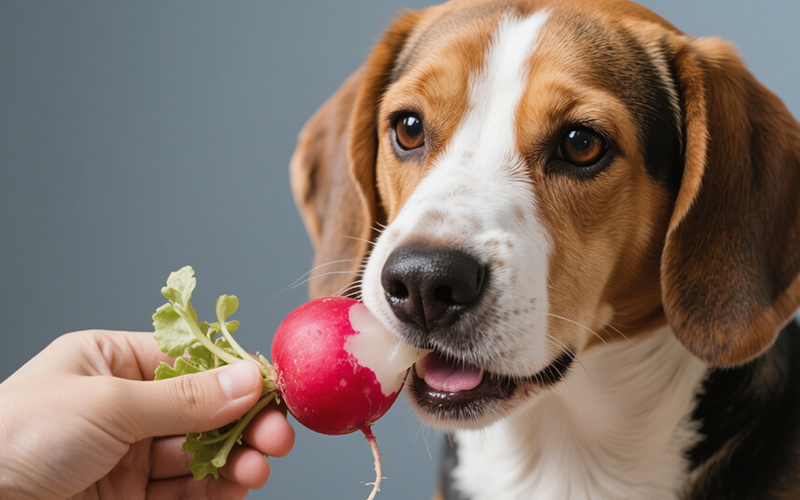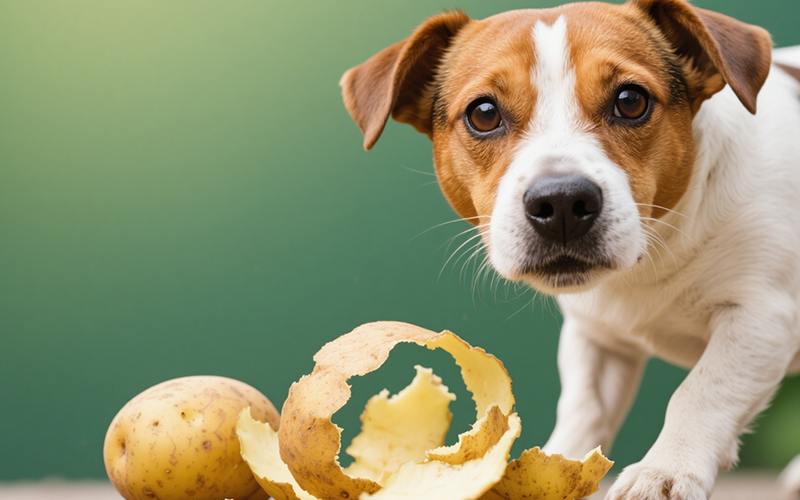Can Dogs Eat Cooked Beef Bones? The Deadly Dangers Vets Warn About
- 14 Apr 2025 10:46
The image is iconic: a happy dog, tail wagging furiously, gnawing away contentedly on a large bone. It seems like the most natural thing in the world. After a roast dinner or grilling steaks, you might look at the leftover cooked beef bones and think, "Why waste this? My dog would love it!" This leads to the very common, yet critically important question: can dogs eat cooked beef bones? The answer from veterinarians, animal safety experts, and informed pet owners is a resounding, unequivocal **NO**. Feeding cooked beef bones (or any cooked bones, for that matter) to your dog is incredibly dangerous and can lead to severe, painful, costly, and potentially fatal health emergencies.
This guide will explore in detail why cooked beef bones are considered one of the most hazardous "treats" you could possibly give your dog. We will delve into the science behind why cooking changes bones, outline the numerous life-threatening risks, debunk common myths, and emphasize the importance of choosing safe alternatives. Our information is grounded in veterinary science and adheres to E-E-A-T (Expertise, Authoritativeness, Trustworthiness) principles to prioritize your dog's safety and well-being.

The Science of Danger: Why Cooking Makes Bones Deadly
To understand why cooked bones are so hazardous, we need to look at what the cooking process does to their structure. Raw bones are relatively softer (though still potentially hazardous in other ways, like causing tooth fractures or bacterial contamination). They contain moisture and collagen, giving them some flexibility.
Cooking, however, drastically alters this composition:
Dehydration: Heat removes moisture from the bone, making it dry and brittle.
Altered Protein Structure: Cooking changes the collagen and protein matrix within the bone, further contributing to its brittleness.
The result is a bone that is far more likely to **splinter and shatter** into sharp, jagged fragments when chewed by a dog, compared to a raw bone which might break more cleanly (though still posing risks). These sharp fragments are the primary source of the severe dangers associated with cooked bones.
Life-Threatening Risks of Cooked Beef Bones: A Vet's Nightmare
Feeding your dog cooked beef bones isn't just slightly risky; it's potentially catastrophic. Here are the specific, well-documented dangers veterinarians regularly encounter:
1. Splintering and Internal Perforation
This is the most terrifying and immediate danger. As the brittle cooked bone shatters under the pressure of the dog's jaw, it creates needle-sharp shards. These can easily:
Puncture the Mouth and Tongue: Causing painful lacerations, bleeding, and potential infection.
Perforate the Esophagus: If a sharp piece is swallowed, it can pierce the tube leading to the stomach.
Perforate the Stomach or Intestines: This is a dire emergency. A hole in the digestive tract allows stomach acid, intestinal contents, and bacteria to leak into the abdominal cavity, causing **peritonitis**. Peritonitis is a severe, rapidly progressing infection that is extremely painful and often fatal without immediate, complex emergency surgery and intensive care.
The risk of internal perforation from cooked bones is a primary reason they must be avoided at all costs.
2. Choking Hazard
Pieces of cooked bone, especially awkwardly shaped fragments from ribs or vertebrae often attached to steak bones, can easily become lodged in the dog's throat or airway (trachea).
Mechanism: The dog might try to gulp down a piece too large or inhale a fragment.
Outcome: Complete airway blockage leads to suffocation and death within minutes if not cleared immediately. Even partial blockage is terrifying and requires emergency intervention.
3. Intestinal Obstruction
Even if bone fragments aren't sharp enough to perforate, they are indigestible. If a dog swallows pieces that are too large to pass through the narrow sections of the intestines (especially the small intestine), they can cause a complete blockage.
Symptoms: Persistent vomiting (often projectile), loss of appetite, abdominal pain, lethargy, inability to defecate.
Treatment: This is a surgical emergency. The blockage must be surgically removed, which is invasive, costly, and carries risks. Delayed treatment can lead to bowel necrosis (tissue death) and rupture.
4. Severe Mouth and Throat Injuries
Beyond perforation, sharp splinters or jagged edges of broken cooked bones can cause significant trauma within the oral cavity and pharynx:
Lacerations to gums, tongue, palate, and cheeks.
Bone fragments becoming embedded in the gums or stuck between teeth.
Damage to the esophagus during swallowing.
5. Dental Damage (Broken Teeth)
While often thought of as brittle, large cooked beef bones (like marrow bones or knuckle bones that have been roasted) can still be incredibly hard. Trying to crack or chew these dense, cooked bones can easily lead to painful tooth fractures.
Common Fractures: Slab fractures of the large upper premolars (carnassial teeth) are particularly common.
Consequences: Requires veterinary dental work, often extraction of the broken tooth or root canal therapy, both of which are expensive and require anesthesia.
6. Constipation and Rectal Injury
Indigestible bone fragments can accumulate in the colon and rectum, forming a hard, concrete-like mass that the dog cannot pass. This condition, called obstipation, is severe constipation.
Symptoms: Straining painfully to defecate, passing small amounts of liquid stool around the impaction, lethargy, abdominal discomfort.
Treatment: May require enemas or even manual removal of the impacted feces under anesthesia. Sharp fragments can also cause rectal bleeding and pain during attempted defecation.
Given this extensive list of severe potential complications, it becomes clear why the answer to "can dogs eat cooked beef bones?" is a resounding NO.
Debunking Myths: "My Dog Has Always Eaten Them!" & Other Fallacies
Despite the clear dangers, some myths persist. Let's address them:
Myth: "My dog has eaten cooked bones before and was fine."
Reality: This is purely anecdotal luck. It's like saying, "I drove drunk and didn't crash." Each instance of feeding a cooked bone is rolling the dice with potentially fatal consequences. The fact that disaster hasn't struck *yet* doesn't make it safe.
Myth: "Dogs in the wild eat bones."
Reality: Wild dogs eat *raw* bones from fresh kills. These bones have different properties than cooked bones. Additionally, wild animals face dangers and shorter lifespans; complications from bone ingestion certainly occur in the wild. We hold our domestic pets to a much higher standard of safety.
Myth: "It keeps their teeth clean."
Reality: While chewing *can* help teeth, cooked bones are far more likely to *break* teeth than clean them effectively. The risk of fracture and oral injury vastly outweighs any negligible cleaning benefit. Safer dental chews and regular brushing are far more effective and appropriate.
Myth: "Boiling makes them softer/safer."
Reality: Boiling still cooks the bone, altering its structure and making it brittle and prone to splintering, just like roasting or grilling. It does not make cooked bones safe.
The Unanimous Veterinary Consensus
Ask any veterinarian, veterinary emergency clinician, or veterinary surgeon, and they will almost certainly have treated dogs suffering from the devastating consequences of eating cooked bones. Organizations like the American Veterinary Medical Association (AVMA) and the U.S. Food and Drug Administration (FDA) have issued warnings advising pet owners against feeding cooked bones due to the severe risks involved.
The professional consensus is clear and unwavering: **Do not feed cooked bones to dogs.** Period.
What To Do If Your Dog Accidentally Eats a Cooked Beef Bone
If, despite your best efforts, your dog gets hold of and consumes a cooked beef bone, this is a potential emergency. Act immediately:
Remove Any Remaining Bone: Safely prevent further ingestion.
Assess the Situation: Try to determine the type and size of the bone and how much was eaten (e.g., whole bone, fragments).
**Contact Your Veterinarian or Emergency Animal Hospital IMMEDIATELY:** Do not wait for symptoms to appear. Explain that your dog ate a cooked beef bone. This warrants prompt veterinary attention due to the high risk of perforation or obstruction.
Provide Details: Be ready to tell the vet the approximate time of ingestion, type/size of bone, amount consumed, your dog's breed/size/weight, and any immediate symptoms (like gagging or vomiting).
Follow Veterinary Advice Explicitly: Your vet may recommend immediate examination, diagnostic imaging (X-rays) to check for obstructions or large fragments, inducing vomiting (RARELY recommended for sharp objects, follow vet guidance ONLY), hospitalization for observation, or even preventative surgery in some high-risk situations.
Monitor Extremely Closely: If your vet advises monitoring at home (less likely for cooked bones), watch vigilantly for:Report any of these signs to your vet immediately.
Vomiting (especially if persistent or contains blood)
Diarrhea (especially if bloody or black/tarry)
Lethargy, weakness
Loss of appetite
Abdominal pain (hunched, whining, guarding belly)
Straining to defecate or constipation
Restlessness or pacing
Difficulty breathing
Time is critical when dealing with the potential complications of ingesting dangerous cooked bones.
Safe Alternatives to Satisfy Your Dog's Chewing Instinct
Dogs have a natural need to chew. Providing safe outlets is essential for their mental and physical well-being. Instead of risking cooked bones, choose from these safer options:
| Chew Type | Pros | Cons / Considerations | Safety vs. Cooked Bones |
| Cooked Beef Bones | None | Extreme risk of splintering, perforation, choking, blockage, dental damage. | NEVER SAFE |
| Durable Rubber Chew Toys (e.g., KONG) | Very durable, minimal risk to teeth/gut, long-lasting, can be stuffed. | Not edible; aggressive chewers might eventually damage/ingest pieces (choose appropriate durability). | Vastly Safer |
| Dental Chews (VOHC Accepted) | Proven dental benefits, designed for safe chewing/digestion. | Can be high calorie; ensure appropriate size; some dogs chew too fast. | Vastly Safer |
| Edible Chews (Bully Sticks, Collagen Chews - Supervised) | Highly palatable, digestible (usually), satisfy chewing urge. | Calorie dense; potential choking risk with last piece (use holders); supervision required. | Significantly Safer (with supervision) |
| Certain Raw Vegetables (e.g., Carrots) | Low calorie, safe to ingest, some dental scraping. | Not durable for power chewers; size appropriately to prevent choking. | Vastly Safer |
| Raw Bones (Specific types, vet-approved, supervised ONLY) | Potential dental/mental benefits (disputed, risky). | Risk of bacteria, broken teeth, choking, GI upset. Requires extreme caution, not suitable for all dogs. Still safer than cooked. | Safer than Cooked (but still carries significant risks) |
Need Urgent Pet Safety Advice? PettureX is Available!
Accidents happen, and knowing what to do in a potential pet emergency is crucial. The PettureX App offers AI-driven tools designed to provide quick information and support:
Object Identification: Unsure about the safety of a particular item your dog might have ingested? Use the image recognition feature.
AI Symptom Analysis: If your pet is showing worrying signs after eating something forbidden like a cooked bone, input the symptoms for preliminary AI insights.
24/7 AI Vet Consultation: Get immediate answers to critical questions, such as "What are the signs of internal perforation after eating a cooked bone?" or seek guidance on managing minor issues anytime, day or night.
PettureX is a helpful resource for quick access to information. However, it is vital to remember that it provides supplementary guidance and **cannot replace a professional veterinary examination, diagnosis, or emergency treatment.** Always contact your local veterinarian for definitive medical advice, especially in emergencies involving cooked bones.
Conclusion: Cooked Beef Bones Are a Recipe for Disaster
In conclusion, the answer to the question "can dogs eat cooked beef bones?" is an absolute, emphatic **NO**. There is no safe way to feed cooked bones to dogs.
Key Reasons to Keep Cooked Bones Away:
High Risk of Splintering: Leading to potentially fatal internal perforations.
Significant Choking Hazard.
Risk of Painful Intestinal Obstruction: Requiring emergency surgery.
Danger of Severe Mouth and Throat Injuries.
Potential for Costly Dental Fractures.
Risk of Severe Constipation (Obstipation).
Universal Veterinary Condemnation: Experts agree they are unsafe.
Don't gamble with your dog's life based on myths or wishful thinking. Dispose of cooked bones securely where your dog cannot possibly reach them (e.g., in a sealed outdoor bin). Provide safe, appropriate chew toys and treats to satisfy their natural instincts. Protecting your dog from the severe dangers of cooked bones is a fundamental aspect of responsible pet ownership.
Related

Radish Bites for Your Buddy? A Vet-Reviewed Guide on Whether Dogs Can Eat Radishes
- 22 Apr 2025
Potato Peels for Pooches? Unpeeling the Risks and Facts for Dog Owners
- 22 Apr 2025
Crunchy Curiosity: Can Dogs Safely Snack on Pork Rinds? A Deep Dive
- 21 Apr 2025
Pomegranate Seeds and Pooches: A Deep Dive into Whether Dogs Can Safely Indulge
- 21 Apr 2025
Can Dogs Eat Peaches? Vet Explains Benefits, Cyanide Risks & Safe Serving
- 16 Apr 2025
Can Dogs Eat Mulberries? Vet Explains Safety, Benefits & Potential Risks
- 16 Apr 2025
Can Dogs Eat Mozzarella? Vet Explains the Cheesy Truth (Risks & Benefits)
- 16 Apr 2025
Can Dogs Eat Mango Skin? Vet Explains Why It's a Risky Chew!
- 16 Apr 2025
Can Dogs Eat Maple Syrup? The Sugary Truth & Why Vets Advise Against It
- 16 Apr 2025
Can Dogs Eat Mac n Cheese? Vet Explains Why This Comfort Food Is Unsafe!
- 16 Apr 2025
